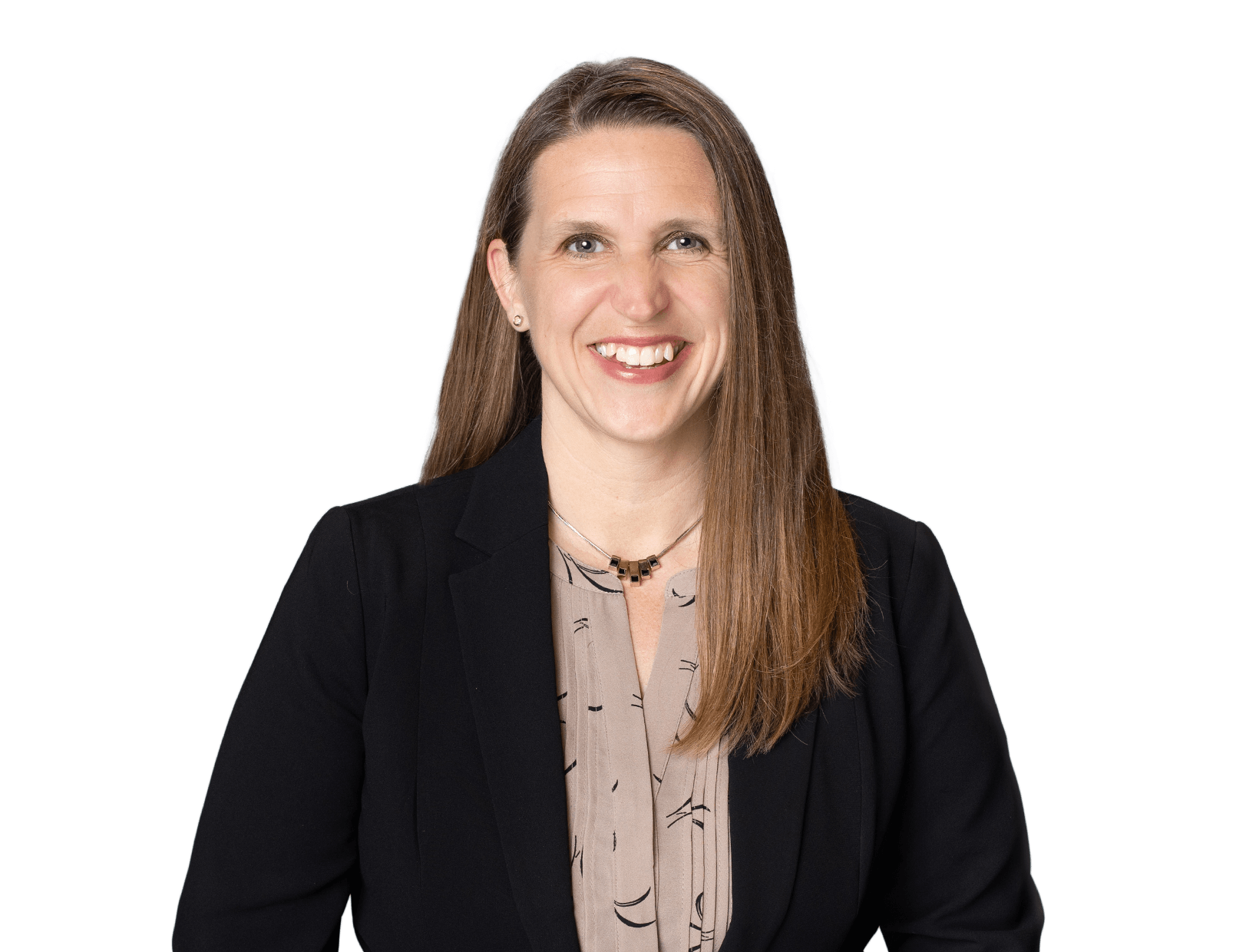Blog
Section 101: Cert. Denied ... Now What?
Fish & Richardson
Authors
-
- Name
- Person title
- Principal

-
- Name
- Person title
- Principal

Authors: Betsy Flanagan, Jon Singer, Deanna Reichel
Since the Supreme Court's decisions in Mayo Collaborative Services, LLC v. Prometheus Laboratories, Inc., 566 U.S. 66 (2012) and Alice Corp. v. CLS Bank, 573 U.S. 208 (2014), lower courts and the United States Patent and Trademark Office (USPTO) have struggled with § 101 patent eligibility determinations, particularly in the life sciences field. In Mayo and Alice, the Court applied a two-part test to determine whether patent claims directed to patent-ineligible concepts (laws of nature, natural phenomena, and abstract ideas) can nonetheless be found patent-eligible as applications of those concepts:
- Are the claims directed to a patent-ineligible concept?
- If no, the claims are patent-eligible
- If yes, move to Step 2
- Do the claims involve an “inventive concept” (i.e., do the elements taken individually and as an ordered combination transform the claim into a patent-eligible application)?
The Mayo/Alice test was intended to help courts draw a line between claims that merely observe unpatentable concepts from those that go a step further by applying them in an unconventional way. However, the Court has not yet found a claim patent-eligible under its own test; in the absence of examples, lower courts and the USPTO have had difficulty drawing a clear dividing line between eligibility and ineligibility. This legal framework is particularly challenging for the life sciences industry, as diagnostic and method of treatment claims often involve observations of natural phenomena.
The Court has been asked to revisit its Mayo and Alice decisions to provide further clarification on many occasions, but so far it has declined to do so. Most recently, the Court was asked to take up the issue in three high-profile patent eligibility cases: Athena Diagnostics, Inc. v. Mayo Collaborative Services, LLC, 2017-2508 (Fed. Cir. July 3, 2019), Vanda Pharms. Inc. v. West-Ward Pharms. Int'l Ltd., 887 F.3d 1117 (Fed. Cir. 2018), and Berkheimer v. HP Inc., 881 F.3d 1360 (Fed. Cir. 2018). The Solicitor General recommended in amicus briefs that certiorari should be denied in Vanda and Berkheimer but granted in Athena. However, the Court ultimately denied certiorari in all three cases.
Athena v. Mayo
In Athena v. Mayo, the patent-in-suit was directed to methods of diagnosing neurological disorders such as myasthenia gravis by detecting antibodies to a protein called muscle-specific tyrosine kinase ("MuSK"). The patent specification, written before the Mayo and Alice decisions, expressly admitted that the claimed methods employ "immunological assay techniques known per se in the art." Applying the Mayo/Alice test, the Federal Circuit found that the claims were directed to a natural law because the claimed advance was only in the discovery of a natural law, and that the additional claims merely recited conventional techniques to detect the natural law. In a precedential order denying a rehearing en banc, the court stated: "In contrast, new method of treatment patents do not fall prey to Mayo's prohibition ... nor have unconventional arrangements of known laboratory techniques, even if directed to natural law." In the Federal Circuit's view, the claims here recited neither a new method of treatment nor unconventional steps to observe the operation of a natural law. The question presented to the Supreme Court in this case was "whether a new and specific method of diagnosing a medical condition is patent-eligible subject matter where the method detects a molecule never previously linked to the condition using novel man-made molecules and a series of specific chemical steps never previously performed." Despite the Solicitor General's recommendation, the Court denied certiorari.
Hikma Pharms. v. Vanda Pharms.
The patent-in-suit in Hikma Pharms. v. Vanda Pharms. related to treatment of schizophrenia patients with iloperidone, marketed as Fanapt®. One of the potential side effects of the drug was QT prolongation, a serious condition that causes fast, chaotic heartbeats that can result in fainting spells, seizures, or, in extreme cases, death. While researching this side effect, the inventors discovered that a certain gene contains an enzyme that was known to metabolize particular drugs, including iloperidone, and that the presence or absence of this genotype could be used to select an appropriate drug dose that would minimize the risk of QT prolongation. In the Federal Circuit's view, the patent claims here went beyond merely observing the natural law of the correlation between the patient's genotype and QT prolongation; rather, they claimed a method of treatment that applies that relationship. Unlike the claims in Mayo, the claims here required the treating doctor to administer iloperidone in the amount of either (1) 12 mg/day or less or (2) between 12 mg/day and 24 mg/day, depending on the result of the genotyping assay.
The question presented to the Supreme Court was "whether patents that claim a method of medically treating a patient automatically satisfy Section 101 of the Patent Act, even if they apply a natural law using only routine and conventional steps." The Solicitor General recommended that the Court deny certiorari in this case because the Federal Circuit correctly held that the method of treatment claimed was patent-eligible under the existing § 101 analysis. In his view, the standard in Mayo was overly restrictive because "an approach that disregards 'routine' or 'conventional' steps in applying Section 101 to a process claim threatens the patent eligibility of numerous valuable innovations that incorporate existing steps into new and useful processes." He thus urged the Court to grant certiorari in a different case (such as Athena) where the current confusion had had a material effect on the outcome of the § 101 analysis.
HP v. Berkheimer
The patent at issue in HP v. Berkheimer covered a digital asset management system in which the system parsed files into multiple objects, assigned tags to them, and created a one-to-many editing relationship between them, thereby improving operating efficiency and reducing storage costs. The district court granted HP's motion for summary judgment, finding the claims patent-ineligible under Alice, which the Federal Circuit vacated in part. In the Federal Circuit's view, patent eligibility is a question of law, but often rests on disputes of underlying facts, and in those cases, summary judgment is inappropriate because a genuine issue of material fact is present: "The question of whether a claim element or combination of elements is well understood, routine, and conventional to a skilled artisan in the relevant field is a question of fact. Any fact, such as this one, must be proven by clear and convincing evidence."
The question presented to the Supreme Court was "whether patent eligibility is a question of law for the court based on the scope of the claims or a question of fact for the jury based on the state of the art at the time of the patent" The Solicitor General recommended that the Court deny certiorari in this case, as he believed that the scope of § 101 must be addressed before procedural issues: "Resolution of the question presented in the petition logically depends on the substantive standard for assessing patent- eligibility under Section 101. As explained in the government's brief filed today in response to the Court's invitation [Vanda], this Court's recent decisions have fostered uncertainty concerning those substantive Section 101 standards. In light of that uncertainty, review to address the logically subsequent, procedural question presented in the petition here is premature. The Court should grant review in an appropriate case to clarify the substantive Section 101 standards and then address any ancillary issues that remain."
The Federal Circuit Framework
Given the Supreme Court's unwillingness to revisit the Mayo/Alice test, the Federal Circuit's § 101 framework will provide the clearest guidance for practitioners going forward.
The Federal Circuit's analysis in Rapid Litigation Mgmt. v. CellzDirect, Inc., 827 F.3d 1042 (2016) illustrates the circumstances under which it is willing to find claims invoking laws of nature patentable under Mayo/Alice. In that case, the patent-in-suit was directed to a method of cryopreservation for producing cultures of liver cells known as hepatocytes. These cells are often frozen to preserve them for later use, and the inventors discovered that some hepatocytes had the ability to survive multiple freeze-thaw cycles. A sample claim read as follows:
- A method of producing a desired preparation of multi-cryopreserved hepatocytes, said hepatocytes being capable of being frozen and thawed at least two times, and in which greater than 70% of the hepatocytes of said preparation are viable after the final thaw, said method comprising:
(A) subjecting hepatocytes that have been frozen and thawed to density gradient fractionation to separate viable hepatocytes from nonviable hepatocytes,
(B) recovering the separated viable hepatocytes, and
(C) cryopreserving the recovered viable hepatocytes to thereby form said desired preparation of hepatocytes without requiring a density gradient step after thawing the hepatocytes for the second time, wherein the hepatocytes are not plated between the first and second cryopreservations, and wherein greater than 70% of the hepatocytes of said preparation are viable after the final thaw.
At Mayo/Alice Step 1, the court found that although the claims relied on a law of nature (i.e., the discovery that hepatocytes are capable of surviving multiple freeze-thaw cycles), they were not directed to that law of nature. The court found that "the inventors certainly discovered the cells' ability to survive multiple freeze-thaw cycles, but that is not where they stopped, nor is it what they patented. Rather, as the first party with knowledge of' the cells' ability, they were in an excellent position to claim applications of that knowledge.' ... That is precisely what they did. They employed their natural discovery to create a new and improved way of preserving hepatocyte cells for later use."
As illustrated in CellzDirect and subsequent cases,[1] the claims at issue need to recite an "inventive concept" that transforms the ineligible law of nature into a patent-eligible application of it. This requires that the claimed method steps do more than use conventional steps — even with a newly discovered natural law. For method of treatment claims, using a preamble such as "method of treating..." can be helpful, particularly where the claim involves dosage steps taken in response to testing. And recently, claims directed to a method of preparation passed the Mayo/Alice test. But claims merely setting forth what a natural correlation "indicates" — with no required action taken — likely are ineligible.
Now What?
The primary takeaway of the recent § 101 certiorari denials is that the Mayo/Alice test will remain the law for the foreseeable future. While Berkheimer will provide some relief to patentees in motion practice, substantive determinations of patent eligibility for claims directed to laws of nature will continue to be based on whether the claims recite an "inventive concept" sufficient to pass the Mayo/Alice test. The most likely prospect for patent eligibility reform now appears to be a draft bill introduced last year that would, among other things, direct courts to construe § 101 in favor of eligibility. However, progress on the bill has stalled after a series of hearings in the Senate Subcommittee on Intellectual Property, and in an election year, passage in the near future seems unlikely.
[1] Natural Alternatives Int'l, Inc. v. Creative Compounds, LLC, 918 F.3d 1338 (Fed. Cir. 2019); INO Therapeutics LLC v. Praxair Distribution Inc., 782 F. App'x 1001 (Fed. Cir. Aug. 27, 2019) (non-precedential).
The opinions expressed are those of the authors on the date noted above and do not necessarily reflect the views of Fish & Richardson P.C., any other of its lawyers, its clients, or any of its or their respective affiliates. This post is for general information purposes only and is not intended to be and should not be taken as legal advice. No attorney-client relationship is formed.